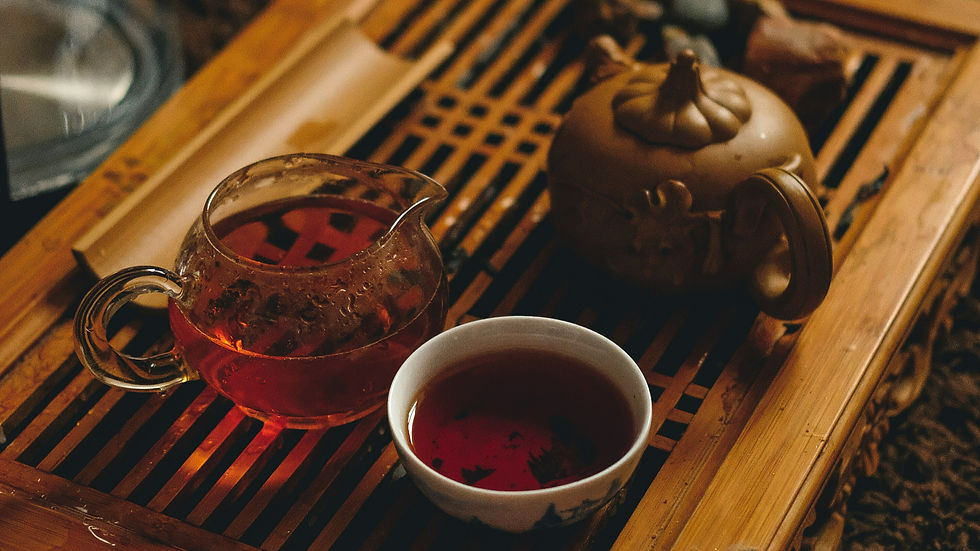Tea, Cha, or The Dancing Leaf
- Jade Lee
- Oct 10
- 3 min read
Food and Travel writer and editor, Jade, invites us to rediscover tea — not just as a drink, but as a story steeped in time.

I recently stumbled upon an article that says the world, for the most part, has only two words for tea — some variation of ‘te' or ‘cha’. With the first originating from the Min Nan dialect mostly used in the Chinese province of Fu Jian, and the latter, from Mandarin Chinese. The rule is simple. If the tea had travelled by land along the Silk Road, it would be reminiscent of ‘cha’, as seen in the Persian ‘chay’ or Swahili ‘chai’. If it had been brought over waters from the coastal Fu Jian, ‘te’ evolved into the Javanese ‘teh’ or Dutch ‘thee’.

More than just a fun fact, I found this map to show how much tea is a core and integral part of so many cultures, dating as far back to ancient civilisation and yet, having seeped its way into becoming a household staple today. The foundation of many forms — addictive sugary bubble tea, hearty chai, dark earl grey, ceremonial matcha — tea has the unique ability to adapt, shifting from being a symbol of status when served in ornamental tea sets and ceremonies, but also at home in the hands of the working man, whether kept in hot-water flasks or sipped from paper cups.
The average Malaysian, like myself, consumes tea in various forms, at various times of the day. In the mornings, teh tarik, well-known and even more well-loved. Boiled black tea, decadent condensed milk, and sugar to your liking, pulled, to mix a drink uniquely Southeast Asian, a frothy welcome before its smooth finish, perfect with the typical Malaysian breakfast, often heavy and oily. At noon, as the heat beats down, the younger crowd may reach for an iced fruit tea or a matcha latte, while the older opt for teh ais or teh o ais in plastic bags slick with condensation, leaving trails of droplets on the sidewalk. In the lingering hour before dinner, the peckish drift into local Indian shops for a cup of earthy Masala chai to go with a selection of savoury snacks or sweets. At Chinese restaurant dinners, a ceramic teapot makes its rounds on the lazy susan, tea sloshing around in haphazard pours, leaving more tea on the table than in cups. Be it chrysanthemum, oolong or pu-er, versatile in its use to also clean utensils or oily fingers.

The story of tea is not simply within the swirling cup, but also, the vessel that holds it, the tablecloth beneath, and the hands that make it. Whether enjoyed hot or cold, in tea bags, loose leaves, or in tins, whether brewed by the cup or made to share, every detail carries its own bit of history.
The process of drinking tea, the concept of a tea time, requires the drinker to slow down, to make time for the water to boil, to blow, to sip cautiously, to tell a story or two, or listen to one, or even write one. Tea may seem like just a drink. But from what I see, tea is alive in its own way. Having danced its way across continents for centuries, coming in different forms and different vessels, it has its own story to tell, very much like us.
References: https://qz.com/1176962/map-how-the-word-tea-spread-over-land-and-sea-to-conquer-the-world


Comments